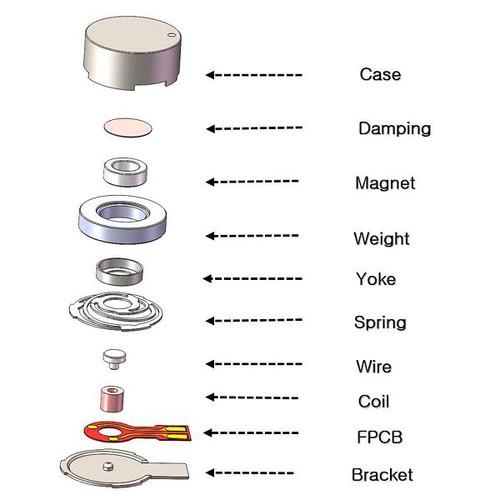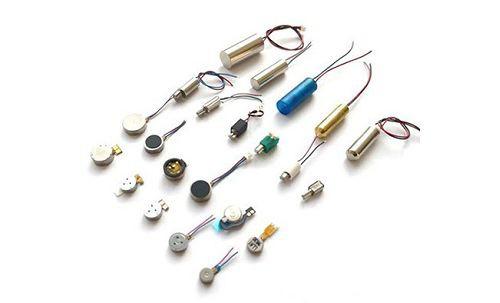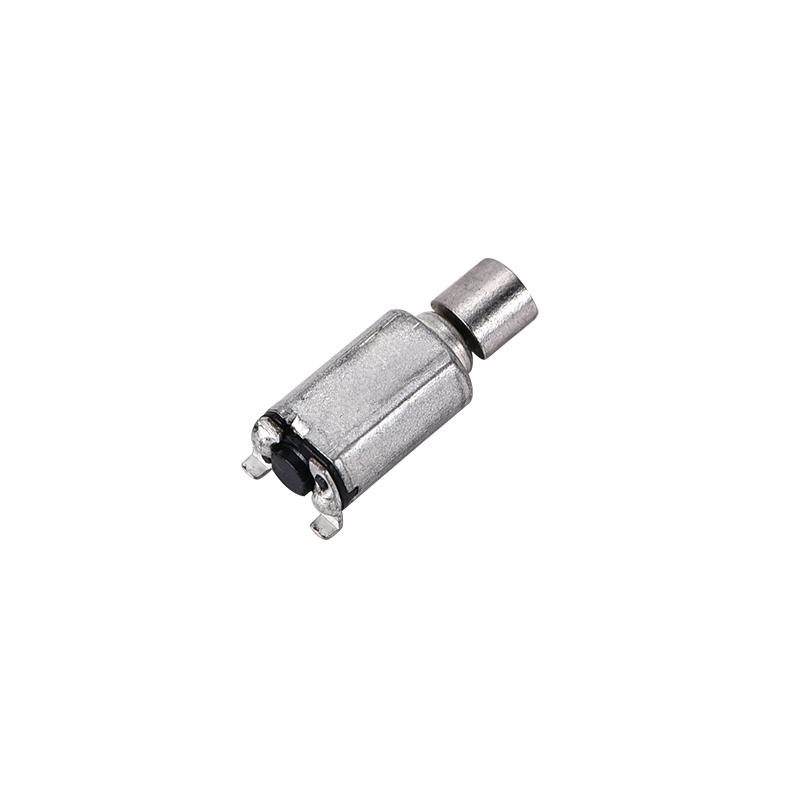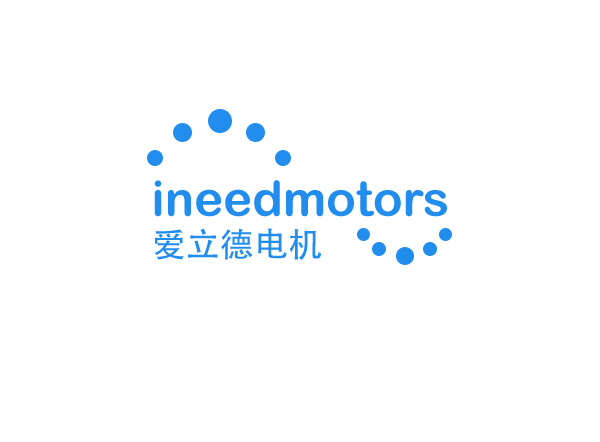Vibration Measurement Methods

Measuring vibration is important to keep machines working well. It checks how equipment moves to find problems or failures. For example, in factories, it shows if parts are not lined up. In airplanes, it makes sure important systems work safely. Car makers use it to improve how cars run.
Good vibration checks stop machines from breaking. It helps machines work better and last longer. By learning about Vibration Measurement Methods, you can keep things safe and running smoothly.
Key Takeaways
Checking vibrations helps keep machines working well and avoids big repairs.
Pick the best way to measure vibrations for your machine and surroundings.
Regular checks find issues early, making machines last longer and safer.
Devices like motion sensors and data tools are key for studying vibrations.
Adding vibration checks to maintenance plans saves money and boosts work output.
Overview of Vibration Measurement Methods
Why vibration measurement matters in industries
Measuring vibrations is key to keeping machines working well. It helps find problems early and avoids expensive repairs. For example, in Europe, studies show 14% to 34% of workers face harmful vibrations. In construction, 63% of workers are affected. Checking vibrations keeps workers safe and machines reliable.
About 90% of machines benefit from vibration checks. This method finds issues like misaligned parts, unbalanced pieces, or worn bearings. Fixing these problems makes machines last longer and lowers repair costs. Whether in factories, airplanes, or cars, vibration checks improve work and boost productivity.
Basics of measuring vibrations
To measure vibrations right, follow some basic steps. First, know your machine. Understanding its design and parts helps pick the best method. Second, think about the environment, like temperature. Some sensors work better in certain conditions. Third, decide if you need to measure vibration or shock. This choice helps you pick the right sensor.
Mounting the sensor properly is very important. A loose sensor gives wrong results. Also, handle sensor cables carefully to avoid noise. For high-frequency checks, match the sensor’s frequency range to your needs. These steps help you get good data and make smart choices for your machines.
Real-life uses of vibration analysis
Vibration checks are useful in many situations. For example, a factory used vibration data to check a noisy motor. They found a bad bearing with a 73% rise in PeakVue amplitude. Fixing it early stopped a big problem. Another case involved Hazleton Pumps and a large pump. They studied the pump’s frequency and adjusted it to avoid resonance, keeping it safe.
These examples show how vibration checks solve problems early. Whether fixing misaligned parts, finding bad bearings, or avoiding resonance, vibration checks keep machines healthy and working well.
Key Vibration Measurement Methods
Time-Domain Analysis
Time-domain analysis is a simple way to study vibrations. It looks at how vibrations change over time. This method tracks vibration levels and finds unusual patterns. For example, if a machine vibrates more suddenly, it may have a problem. Issues like worn bearings or misaligned parts can be detected early. This helps prevent failures before they happen.
This method is great for finding problems in bearings. It spots changes in vibration patterns that healthy machines don’t have. By watching vibration levels over time, you can see if a machine is getting worse. It also shows which part of the machine is affected. For example, it could be the inner raceway, outer raceway, or rolling parts.
Tip: Always attach sensors tightly. Loose sensors give wrong data and hide problems.
Frequency-Domain Analysis
Frequency-domain analysis studies vibration by breaking it into frequencies. It shows which machine parts cause the vibrations. This method is good for finding problems like unbalanced parts or resonance.
Studies show frequency-domain analysis is important for maintenance. Tools like MATLAB can study frequency data to predict machine life. It also measures how strong the vibrations are. Another study shows it helps monitor machine tools. By using both time and frequency data, you can predict wear and keep machines working well.
This method works well with tools like accelerometers. These tools collect vibration data while machines run. The data helps predict failures and improve performance.
Note: You need special tools for frequency-domain analysis. Pick tools that fit your needs.
Modal Analysis
Modal analysis studies natural frequencies and shapes of structures. It shows how machines or structures react to vibrations. For example, engineers studied the Fred Hartman Bridge using this method. They found natural frequencies between 1.9 Hz and 2.7 Hz. This showed how cables and connectors affected the bridge’s vibrations.
This method is useful for testing big structures like bridges or turbines. It finds weak spots and prevents resonance, which can cause damage. Modal analysis also helps design safer and stronger machines.
Tip: Use modal analysis when designing projects. It helps make structures handle vibrations better.
Operational Deflection Shape Analysis
Operational Deflection Shape (ODS) analysis shows how machines move while working. It helps find vibration patterns in real-time. This makes spotting problem areas easier. Unlike other methods, ODS focuses on actual machine movement during operation, not on models or single parts.
How ODS Analysis Works
Sensors like accelerometers are placed on machine parts. These sensors measure vibrations at each spot. The data is processed using software to create a visual of the machine's movement. Animations show how parts vibrate compared to others. For example, if one fan blade vibrates more, it may be unbalanced or weak. ODS gives a clear view of the system to find problems fast.
Benefits of ODS Analysis
ODS analysis has many advantages:
Real-Time Insights: It shows how machines act while working, making results accurate.
Comprehensive View: It checks the whole system to find part interactions causing issues.
Problem Diagnosis: It detects misalignment, looseness, or resonance that other methods miss.
Improved Maintenance: It helps plan repairs better, saving time and money.
Applications of ODS Analysis
ODS analysis works in many industries. In factories, it improves machine performance and prevents breakdowns. For example, it can study conveyor belts. It might find uneven vibrations from a misaligned roller, allowing quick fixes.
In aerospace, engineers use ODS to check airplane parts like wings or engines. They study vibrations during flight to spot risks and improve designs. In cars, ODS helps test how parts handle road conditions, improving performance.
Tips for Effective ODS Analysis
Choose the Right Sensors: Pick good accelerometers that match your machine’s frequency range.
Proper Sensor Placement: Put sensors on key spots for accurate readings.
Use Reliable Software: Get software that processes data well and shows clear visuals.
Regular Testing: Test often to track changes in machine behavior over time.
Note: ODS works well with other methods like time-domain or frequency-domain analysis. Using them together gives a full picture of machine health.
ODS analysis is great for studying vibrations and machine behavior. It improves performance, extends equipment life, and keeps machines safe.
Tools and Equipment for Vibration Measurement
Accelerometers and their role in vibration measurement
Accelerometers are key tools for measuring vibrations. They sense motion and turn it into electrical signals. These signals show how machines act in different situations. Accelerometers use the piezoelectric effect. Crystals create voltage based on acceleration, making them very accurate.
There are two main types: piezoelectric and Integrated Electronic Piezoelectric (IEPE) accelerometers. Both can measure vibrations from low to high frequencies. Their tough design works well in harsh places, like hot or corrosive areas. For example, accelerometers with 100 mV/G sensitivity find small vibrations. This helps detect problems like imbalance or misalignment early.
Tip: Always attach accelerometers tightly to get correct readings.

Laser Doppler Vibrometers for precision analysis
Laser Doppler Vibrometers (LDVs) are very precise tools. They use lasers to measure vibration speed without touching the object. By tracking changes in laser light, they give detailed vibration data. This makes them great for delicate tasks, like testing fragile items.
Studies show their accuracy. For example, scientists used LDVs to check fresco paintings for damage without touching them. In industries, LDVs measure machine mobility and perform modal analysis. They also capture high-frequency vibrations for reliable results.
Note: Align LDVs carefully for the best performance.
Proximity Probes for displacement measurement
Proximity probes measure how far machine parts move from each other. They are best for low-frequency vibrations in big machines like turbines. These probes sense distance changes between their tip and a surface.
Proximity probes give strong displacement data but can be tricky to set up. They filter out high-frequency data, so they don’t work for all tasks. Still, they are great for low-frequency uses. They help keep machines stable and prevent breakdowns.
Tip: Use proximity probes when exact displacement data is needed.
Data Acquisition Systems and Software for machine vibration analysis
Data acquisition systems and software are important for measuring vibration. They collect and process data to check machine health. These tools turn raw signals into useful information.
Modern systems use advanced sensors to gather vibration data. Sensors like accelerometers send signals to the system. The software processes this data in real time. It finds patterns or unusual changes. This helps monitor machines and catch problems early.
Software makes vibration tools more effective. It shows data visually, tracks trends, and gives alerts. For example, Enedis used AI-powered software to plan maintenance better. It found issues faster and saved resources. This shows how technology improves vibration analysis.
These systems track machine performance over time. They help find trends like rising vibration levels. This can show wear or misalignment. Fixing these issues early avoids breakdowns and extends machine life.
When picking a system, check if it works with your sensors. Look at its speed and software features. Good systems collect accurate data. Easy-to-use software makes analysis simple. Together, they help keep machines in good shape.
Tip: Update your software often for better features and accuracy.
Data acquisition systems and software are key for measuring vibration. They help you monitor, analyze, and maintain machines easily.
Applications and Challenges of Vibration Measurement Methods
Uses in predictive maintenance and checking structure health
Vibration measurement helps in keeping machines and structures safe. By studying past and current vibration data, you can spot early problems. For example, wireless sensors make monitoring easier in modern factories. Digital tools help plan repairs better, reducing machine downtime.
Predictive maintenance saves money. It costs 8% to 12% less than regular maintenance and 40% less than fixing broken machines. Vibration checks give a big return on investment by stopping failures. In factories, 67% of machine issues come from bad bearings or poor lubrication. Vibration sensors find these problems early. On train tracks, sensors detect damaged wheels, stopping accidents.
Checking structure health also uses vibration data. For example, in the UK, train systems use sound sensors to find bad bearings. These sensors can spot problems 3,000 miles before failure. These examples show how vibration checks improve safety and reliability.
Problems like noise and tool limits
Vibration measurement has some problems too. Noise and tool limits can make results less accurate. In places with lots of movement, even tiny shakes can cause mistakes. For example, advanced tools like interferometers measure very small vibrations but struggle in noisy areas.
Different places need different vibration limits. Patient rooms should stay below 6,000 microinches per second. Operating rooms need stricter limits of 4,000 microinches per second. To meet these limits, you need good vibration isolation and advanced tools. Without proper isolation, errors in vibration readings can happen.

How INEED's motors solve these problems
INEED's vibration motors fix many of these problems. Their small size and custom features give accurate vibration control, even in tough conditions. For example, their linear motors use special coils for steady vibrations and better reliability. These motors work well in low-power and high-efficiency tasks.
INEED's motors also reduce vibration issues with strong designs. They handle harsh conditions and last longer. Adding these motors to monitoring systems improves vibration checks. This makes machines safer and more reliable.
With INEED's smart solutions, you can avoid noise and tool problems. This ensures better vibration monitoring and machine performance.
Choosing the Right Vibration Measurement Method
Things to think about: system type, accuracy, and cost
Picking the best vibration measurement method depends on a few things. First, think about the system you are checking. Small systems, like gadgets, often use MEMS sensors. These sensors are tiny, save energy, and are affordable. For high-precision tasks, like in airplanes, FOG systems work better. They are stable and very accurate.
Accuracy is also very important. If you need exact data, choose the right tools. For example, sensitive accelerometers find small vibrations. But for slow-moving vibrations, proximity probes are a better choice.
Cost matters too. MEMS sensors are cheaper and good for general use. FOG systems cost more but are perfect for special tasks needing high precision. Balancing cost and accuracy helps you get the best results without spending too much.
Tip: Check your system’s environment. Tough places may need strong tools, like INEED’s waterproof and dustproof motors.
Matching methods to different uses
Different jobs need different vibration methods. The table below shows how methods fit various industries:
Industry | Use | Benefits |
|---|---|---|
Manufacturing | Checking machines | Stops delays and keeps production smooth. |
Aerospace | Watching airplane engines | Keeps engines safe and working well. |
Marine | Checking ships and structures | Prevents big problems and improves safety. |
Automotive | Watching factory machines | Ensures quality and avoids defects. |
Energy | Checking turbines and generators | Finds problems early and saves money. |
Healthcare | Watching medical tools | Keeps tools accurate and patients safe. |
Construction | Checking heavy machines | Lowers accident risks and extends machine life. |
Oil and Gas | Watching drilling tools | Stops spills and protects equipment. |
Pharmaceutical | Checking drug-making machines | Ensures quality and follows rules. |
Knowing your industry’s needs helps you pick the right method. For example, frequency-domain analysis is great for turbines in energy plants. Time-domain analysis works better for finding misaligned parts in factory machines. Using the right method gives better results and saves time.
Beginner tips for vibration analysis with INEED's motors

Starting vibration analysis can seem hard, but the right tools help. INEED’s SMD vibration motors are great for beginners. These small motors are easy to add to devices. They fit on circuit boards, making them perfect for gadgets like smartwatches or phones.
INEED’s encapsulated motors are another good option. These motors are tough, waterproof, and dustproof. They work well in rough places like construction sites or on ships. Their strong design ensures they last even in tough conditions.
Here are some beginner tips:
Start Simple: Begin with small devices. Use SMD motors to learn basic vibration patterns.
Learn Tools: Understand tools like accelerometers and data systems. These help you collect and study vibration data.
Try Settings: Change vibration levels to see how it affects results. INEED’s motors let you adjust easily.
Use Good Software: Pick software that shows clear visuals and simple data. This helps you spot problems quickly.
Ask for Help: Contact INEED’s support team for advice. They can guide you to use their motors better.
Note: Regular checks with INEED’s motors make maintenance easier. Spotting problems early keeps machines running longer.
By following these tips, you can learn vibration analysis step by step. INEED’s motors are easy to use and help you get accurate results while improving machine performance.
Checking vibrations is key to keeping machines in good shape. Methods like time-domain, frequency-domain, modal, and ODS analysis find problems early. Picking the right method gives accurate results for your needs.
INEED's tools make machines safer and last longer. They help with maintenance and show how to improve machine life. See the table below for details:
Type of Metric | What It Does |
|---|---|
Survival Analysis | Predicts when machines might fail and shows survival chances. |
Maintenance Operations Analysis | Finds weak machines and checks how well maintenance is done. |
Maintenance Performance Factors | Studies risks that shorten machine life using smart statistical tools. |
With INEED, you get dependable tools to keep machines working well.
FAQ
What are vibration transmitters, and how do they work?
Vibration transmitters turn vibrations into electrical signals. These signals check machine health. They help find problems like imbalance or misalignment. By studying the data, you can stop equipment failures early.
How often should you measure machine vibrations?
Check vibrations regularly based on how often machines run. For important machines, check weekly or monthly. Regular checks find problems early and prevent long downtime.
Can vibration analysis improve machine lifespan?
Yes, it finds problems early and stops bigger damage. Fixing issues quickly keeps machines working longer. It also lowers repair costs over time.
What tools are best for beginners in vibration measurement?
Beginners should use accelerometers and simple data systems. These tools are easy to handle and give good results. INEED’s small motors are also great for learning on small devices.
Why is sensor placement important in vibration measurement?
Sensors must be placed correctly for accurate readings. If sensors are loose, they give wrong data. Always secure them tightly to avoid mistakes.
See Also
Comprehensive Handbook for Accurate Vibration Measurement Techniques
Top Instruments for Effective Vibration Measurement Explained
Understanding Vibration Motors in Haptic Feedback Technology
Get Custom Micro DC Motors from
INEED Motors!
Leading Brand in Vibration Motor Manufacturing Industry
